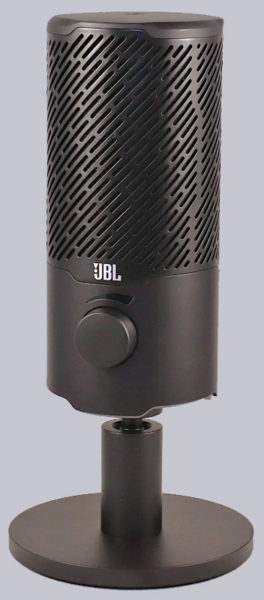
Practical testing …
So far, everything has been very simple and intuitive, and that’s how it continues in our practical testing. The JBL Quantum Stream immediately integrates into our setup as if we had never owned any other microphone.

The big advantage of a separate microphone compared to a headset is, of course, that accidental breathing noises caused by an unfavorably positioned headset microphone are eliminated. In addition, a separate microphone can usually score with a significantly better audio quality.
Disadvantages can be that you should always keep in mind that you have to speak more or less in the right direction. A separate microphone may also pick up more background noise, such as keyboard noise, depending on its positioning.
However, the JBL Quantum Stream is inconspicuous and flexible enough that we had no trouble finding a good position for it. Operation and control via the JBL Quantum Engine were very easy and intuitive.
The function of connecting the headset or headphones directly to the Quantum Stream is quite practical. However, you have to worry about the whereabouts of the cable, which would possibly run across the table again in this configuration.
Otherwise, the audio quality completely convinced us. We were very clearly understandable in every situation and the newly gained freedom at the desk with a simultaneous clear gain in quality is simply fun.
For a better assessment, we have again recorded a sample sequence with the JBL Quantum Stream Microphone.
Visually, the Quantum Stream is also convincing. Only the USB-C cable could be neutral black and would fit even better into various setups, but that is complaining on a very high level. Surely, most people have one or the other leftover USB-C cable in their drawer, so this small optical blunder can be quickly fixed thanks to the modular design.
JBL Quantum Stream Microphone Result and general impression …

